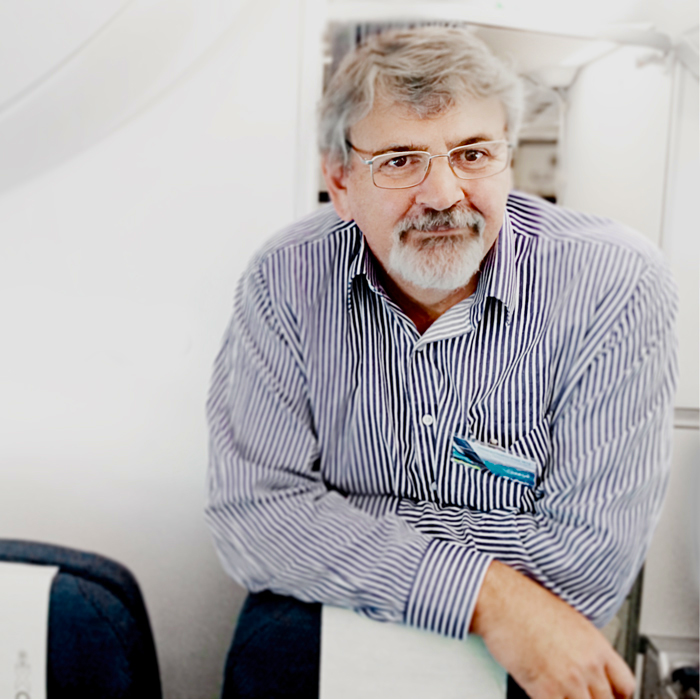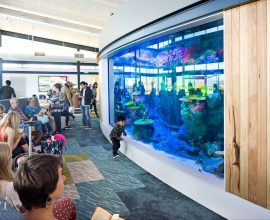Understanding local demand key to regional growth
Regional airports looking to grow their passenger base need to be realistic about their expectations and find the low-hanging fruit when it comes to route development.
That was some of the advice to regional airports to flow from a panel of experts at November’s Australian Airports Association national conference in Brisbane.
“Everybody thinks route development is about going after a new route, getting a new airline in,’’ Ailevon Pacific Aviation Consulting managing director Oliver Lamb said.
“It doesn’t need to be. a lot easier for the airline to do and might actually give you more passengers than getting a new destination.
“It’s a whole lot easier to market and a whole lot easier to build the demand for.”
Lamb also identified a new problem starting to affect the ability of regional airports to attract services: the pilot shortage.
“We’re seeing developing countries’ demand for air travel growing at an exponential rate,’’ he said.
Another global trend was the move towards bigger aircraft and Lamb reiterated a warning that there were no 34-seat aircraft being built anymore and no plans to do so.
“Small communities which relied on air services for decades are now staring down the prospect of either needing to find demand that’s going to support a 70-seat or 100-seat aircraft or they’re going to lose air services altogether,’’ he said.
“So air service development for many airports and many communities around Australia has actually turned into air service retention.
“I think if you’re not planning for a future where the smallest aircraft is 70 seats or 100 seats, you need to because that’s what’s going to happen in Australia.
“And I think that’s going to require communities to work together to try and decide is there one airport that can actually serve the demand for a region.
“Alternatively, are there ways to stimulate demand that’s going to generate a lot more passenger traffic through your airport?”
Newcastle Airport chief executive Peter Cock said route development was about numbers and airports needed to talk to locals who did not use the airport as well as customers.
“So you’ve got to have the fundamentals of the route established and the demand profile,’’ he said.
“At Newcastle, we did a fair bit of work to survey and talk to our catchment to find out where they wanted to go, what their demand was and how they were using air services at the moment.’’
Dr Cock said leakage was a problem for Newcastle because of its proximity to Sydney and it had spoken not just to existing customers but those who could become customers.
“So you have to talk to the people who aren’t using you to find out why not and to be honest about their responses,’’ he said.
“For us, one of the problems was about not having a lounge. It’s not something that we can put in place in the short term but at least we understand that and we’re not trying to sugar coat the answers.’’
In terms of inbound customers, Dr Cock said it was important for airports to understand their product and their value proposition.
He said this was not just what it was now but also what it could be in terms of regional aspirations.
It was also important to look at how a region was coming together to promote itself and its product.
“As a regional airport, I find it’s really important that we’re one of the catalysts and we can bring the region together,’’ he said.
Airbiz senior consultant Cally Ward told the audience to view regional demand as a pie chart that cut two ways, with both locals and visitors.
“And then within that it’s reasons for travel – it’s leisure, business and then visiting friends and relatives, VFR,’’ she said.
“But if you always think of six slices of pie they will be radically different for each individual airport.
“If you’re an end-of-line destination, just over half of your passengers would be locals because you’re always going to favour that outbound and you’re always trying to claw back that leakage if you’re in Peter’s position and retain as much as that originating traffic as you can.
“And you’re always looking to buddy up with your hub airport because they can provide you with that connectivity that is going to retain your local traffic.
“Then there are unique examples like FIFO and construction activity that create peaks and troughs and oddities, unique aspects within the market.”
Ward said other factors would include the size of the local population, key industries, demand drivers and tourism assets.
“You might have a lot of assets in your tow that are mum and dad operations that are currently focused on the drive market,” she said.
“That’s not to say they’re not niche products that can’t grow.
“There are plenty of people in this room who have fantastic, unique products in their market place but they’re just not on the radar of the world.”
Committee chair Denise Brown, who is Brisbane Airport’s aviation business development manager, said the Queensland gateway hub nourished regional airport development plans and had seen a number of successes, particularly over the last five years.
She said Brisbane partnered with airports to make sure it enhanced as much regional route development as it could.
She said much of this was about minimising leakage and building the Brisbane demand profile to claim passengers.
“So the more that we can do regionally, the better it is for us and the better it is for Queensland,’’ she said.
By Steve Creedy
About Steve Creedy
 An award-winning journalist, Steve began covering aviation in the United States in the early nineties before returning to Australia later that decade and editing The Australian’s aviation section for 17 years. He is editor of Airline Ratings and has co-authored books on industry initiatives aimed at reducing greenhouse emissions.
An award-winning journalist, Steve began covering aviation in the United States in the early nineties before returning to Australia later that decade and editing The Australian’s aviation section for 17 years. He is editor of Airline Ratings and has co-authored books on industry initiatives aimed at reducing greenhouse emissions.
Steve has joined the AAA to write interesting and informative editorial on the aviation industry.





